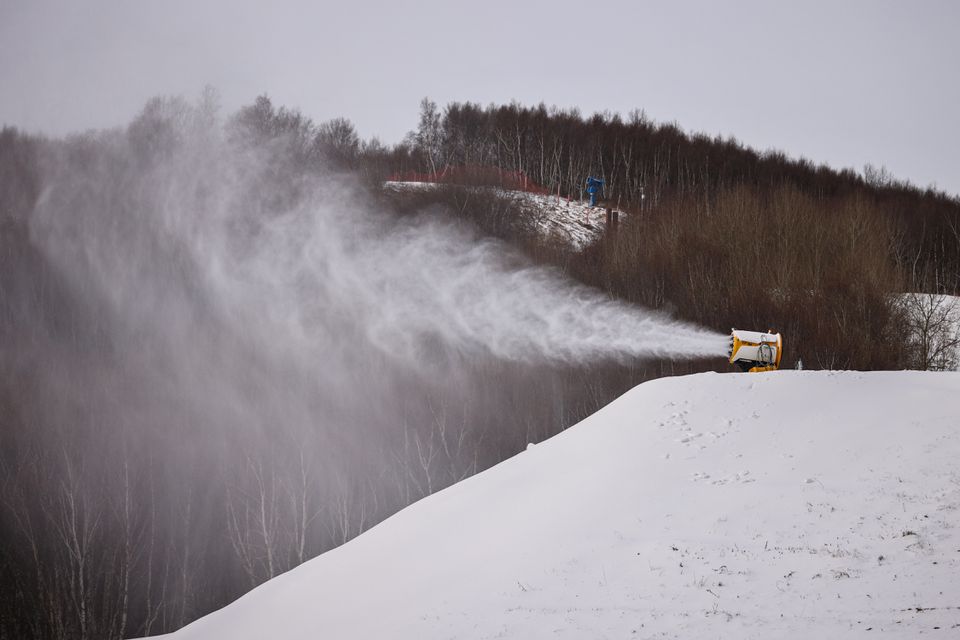From natural carbon dioxide refrigeration at ice rinks to 100% renewables-powered venues, China is striving to run a "green" Olympics to showcase its leadership in climate-friendly tech and counter concerns about the lack of natural snow at its venues.
President Xi Jinping has pledged China, the world's biggest polluter, will reduce its total carbon emissions from 2030 and be a global leader in fighting climate change.
"(The Chinese) want sustainability to be the heart of how they prepare and host the Games," Marie Sallois, Director of Corporate and Sustainable Development at the International Olympics Committee, told Reuters.
The Beijing Winter Olympics Committee said in a pre-Games report in January that about 158,300 tonnes of emissions have been saved via deployment of low-carbon energy and venues.
Total greenhouses gases emissions could reach 1.028 million tonnes of carbon dioxide equivalent throughout the preparation and post-Beijing Games in 2016-2022, about a third less than the 1.6 million tonnes emitted for South Korea's Pyeongchang Games in 2018.
Most of that reduction comes from the absence of overseas spectators at the Beijing Games due to China's zero-COVID protocols. The lower number of international flights will mean 512,000 tonnes of CO2 emissions less than earlier projections, the committee said.
|
|
| A TechnoAlpin snow gun sprays snow onto a slope at the Genting ski resort in Zhangjiakou, close to venues for the Winter Olympics Beijing 2022, Hebei province, China, November 20, 2021. Photo: Reuters |
Waste cooled rinks
China, for the first time at an Olympics, is using CO2 collected from industrial waste gases to cool ice rinks in its four ice sports venues, replacing traditional hydrofluorocarbons that can damage the ozone layer.
"With the CO2 refrigeration process, we can save 20-30% on electricity compared to traditional ice making methods," Wu Xiaonan, an official at the National Speed Skating Oval, said earlier this week.
The 25 games venues, of which 13 were newly built, have also deployed energy-saving technologies, including low-carbon building materials such as recycled cement and smart snowmaking, which could use 20% less water than traditional technologies.
All Games venues will also be fully powered by electricity from wind farms in the neighbouring Hebei province through a 666-km (414 mile) ultra-high voltage grid, while more than 800 hydrogen-fuelled vehicles are being deployed.
China is the world's largest hydrogen producer, with annual production capacity of 41 million tonnes, and has been striving to make technology breakthroughs in storage and transporting the clean energy.
Still, criticism over pollution, water usage and the ecological sustainability of the Beijing Games has persisted, especially over the need for 100% artificial snowmaking, which puts pressure on regions with already strained water resources.
Carmen de Jong, professor of hydrology at University of Strasbourg said there has been a dangerous trend of moving the Winter Olympics toward dry countries with limited snow, requiring extensive, carbon-intensive infrastructure.
"Beijing is the worst of all candidates, because it required so much more water," said Jong.





















































